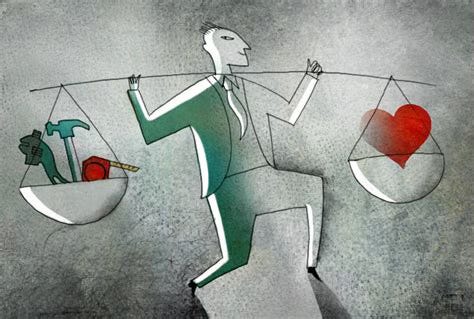Dealing with the Complexity of Power Dynamics in Organisations
Insights for businesses derived from the theory of Complex Responsive Processes of Relating
Introduction
Power dynamics are the invisible currents that shape the seas of organisational life. On these pages, I have referred to them as important for guiding organisational conversations many a time. In the very first posting of this article series, I even started by seeing organisations as conversations. Accepting that model, it immediately draws attention to the importance of power dynamics for the very process of organising itself.
Understanding these dynamic currents is crucial for leaders and managers navigating the often murky waters of decision-making, communication, and collaboration that are the core of our organisational life.
In this article, I would like to delve into the depths of power dynamics within organisations, drawing upon the lens of complex responsive processes of relating pioneered by the late Ralph Stacey and others in the Complexity and Management Centre, like in this blog.
This exploration aims to illuminate the complexities of power and offer practical insights for business professionals seeking to navigate and leverage these dynamics effectively.
Exploring Power Dynamics
To do this, I would like to use 9 different constituent parts to explore Power Dynamics.
Here we will look at those parts one-by-one.
1. The Multifaceted Nature of Power
Power within organisations is not a monolithic force but rather a multifaceted phenomenon that permeates every aspect of organisational life. It manifests itself in various forms, including formal authority, expertise, access to resources, and interpersonal influence. For instance, consider a scenario where a senior executive holds significant decision-making authority due to their position in the hierarchy. However, a production supervisor may wield influence through their expertise and strong relationships with key stakeholders, despite lacking formal authority.
2. Dynamics of Influence and Control
At its core, power involves the dynamics of influence and control. While formal hierarchies may confer positional power, individuals and groups also wield power through informal networks, alliances, and social capital. For example, in a project team, a charismatic team member might exert influence by rallying others behind their ideas and vision, even if they lack formal leadership status. Understanding these informal power dynamics is essential for leaders seeking to build effective teams and foster collaboration.
3. Relational Perspectives on Power
Complex responsive processes of relating offer a relational lens through which to understand power dynamics within organisations. According to this perspective, power emerges through relational interactions and is continuously negotiated and contested in social contexts. Consider a boardroom meeting where different stakeholders advocate for their interests and vie for influence over the direction of a project. These interactions shape the distribution of power within the organisation, influencing subsequent decisions and actions.
4. Power and Identity
Identity plays a significant role in shaping power dynamics within organisations. Factors such as gender, race, ethnicity, age, and socio-economic status can influence individuals' access to power and their experiences within the organisational hierarchy. For instance, research has shown that women and minority ethnic groups often face barriers to advancement within corporate environments, limiting their access to positions of power and influence. Recognising the intersections of power and identity is essential for promoting diversity, equity, and inclusion within the workplace.
INTERMEZZO - The Power of Power Dynamics

Let’s explore an example from my experience of the power of power dynamics.
In this case we were running a workshop within a large organisation to help identify ways to get the organisation back on track of a strategic initiative that had derailed. For the purpose of this article, it is not important what that issue was, but together with the management team, we had selected a cross-section of their organisation to the working session, around 25 people. They were people that worked in the plants, sales people, HR people, managers and directors. The CEO of the business also participated.
Amongst other things, we decided that all people would sit in a circle, without any desk to hide behind. Also, everyone was asked to show up in casual clothes that they would wear at home. Both were key design principles of the workshop, intended to avoid obvious visual clues of power, etc. (the man with the suit and tie, vs the woman in the production overall, for instance).
We had a good conversation where, predictably, the senior managers took a very strategic and managerial approach in the discussions, and the people from the shop floor a very practical and operational approach. No surprises there.
But, after an intentional break, we asked the senior managers to after the break sit down in completely different places as before the break (humans are creatures of habit and 99 out of 100 times will return to the same seat as before the break). We did not tell them why, though.
This was a real surprise! People were confused (understandable) but eventually settled in new places.
Now the remarkable thing happened: the people that sat in the seats previously occupied by senior managers, started to talk much more strategically and, just as remarkable, the senior managers that sat in seats previously occupied by operators, much more practically and applied. The effect was much more pronounced than what we had expected (and we therefore do this almost always now!).
What can we conclude from this?
Well, many things, I guess, but one suggestion I would like to make is that the power associated with the person that used to occupy the seat, was now (at least partly) associated with the seat, not the person.
People can start to identify with the perceived power of an individual when they are physically in the same spot as where that perceived power resides.
I think that is an interesting observation.
5. Reflexivity and Self-awareness
Developing reflexivity and self-awareness is fundamental for leaders and managers seeking to navigate power dynamics effectively. This involves interrogating one's own assumptions, biases, and privileges, as well as understanding how they impact interactions and decision-making processes. For example, a manager may reflect on how their own leadership style and communication preferences influence power dynamics within their team. By cultivating reflexivity, individuals can become more attuned to the complexities of power and its implications for organisational dynamics.
6. Challenging Power Imbalances
Addressing power imbalances requires a willingness to challenge existing structures and practices that perpetuate inequities. This may involve rethinking traditional notions of leadership, promoting participatory decision-making processes, and creating opportunities for marginalized voices to be heard. For instance, a company may implement diversity training programs and unconscious bias workshops to raise awareness of power dynamics and promote inclusivity in decision-making processes. By actively challenging power imbalances, organisations can foster a culture of inclusivity and belonging.
7. Dialogue and Collaboration
Effective communication and collaboration are essential for navigating power dynamics within organisations. Creating spaces for open dialogue and constructive conflict resolution can help mitigate power struggles and foster mutual understanding amongst stakeholders. For example, regular team meetings where members are encouraged to share their perspectives and voice concerns can help surface underlying power dynamics and promote transparency. By embracing a collaborative approach to decision-making, organisations can harness the collective wisdom and creativity of their workforce.
8. Distributed Leadership and Empowerment
Distributed leadership offers an alternative model for sharing power and decision-making authority within organisations. By empowering employees at all levels to take ownership of their work and contribute to the collective goals of the organisation, leaders can foster a sense of agency and accountability amongst their teams. This distributed approach to leadership promotes innovation, resilience, and adaptability in the face of complex challenges. For example, a company may implement cross-functional teams where members from different departments collaborate on projects, enabling diverse perspectives to inform decision-making processes.
9. Embracing Complexity and Uncertainty
In today's fast-paced and unpredictable business environment, leaders must embrace the inherent complexity and uncertainty of organisational life. Rather than seeking to control or predict outcomes, they should adopt a mindset of adaptive responsiveness, continually learning and adapting in response to emerging opportunities and challenges. Embracing complexity requires a willingness to experiment, take calculated risks, and learn from failure as part of the ongoing process of organisational evolution. For instance, an agile approach to project management allows teams to respond quickly to changes in market conditions and customer preferences, enabling organisations to stay ahead of the curve.
Conclusion
Working with, rather than against, power dynamics within organisations requires a deep understanding of the complexities inherent in human interactions and relationships. By adopting a relational perspective on power, fostering reflexivity and self-awareness, challenging power imbalances, promoting dialogue and collaboration, and embracing distributed leadership and empowerment, organisations can create more inclusive, resilient, and adaptive workplaces. In doing so, your organisation can harness the full potential of your people to drive innovation, growth, and success in an ever-changing business landscape.
I would argue that a key leadership skill is to understand that power dynamics exist and cannot be managed away.
Perhaps the most important leadership skill is to help draw attention to those power dynamics and help yourself and the people in your organisation navigate this reality, using some of the insights provided in this article.
How do you perceive power dynamics?
Do you know of ways to minimise any power differentials? And, if so, are you really minimising them, or are you patching it up?
‘My door is always open!’, says the senior manager, whilst walking into her office that is carefully guarded by her Executive Assistent, whose sole job seems to be to precisely stop anyone from walking into the open door).
Or do you recognise the above vignette?




The size of the effect of the chair change was the most noticeable thing for me.
Role playing most certainly has great potential, but my experience is that we must guard for deliberate “acting” beyond what “feels naturally”, if you get my drift.
Very interesting results from moving seats, Frank. The roles are still in the room, but the person playing them can change. This is why I also like role-play in workshops. To shift perspectives on a physical, intellectual and emotional level.